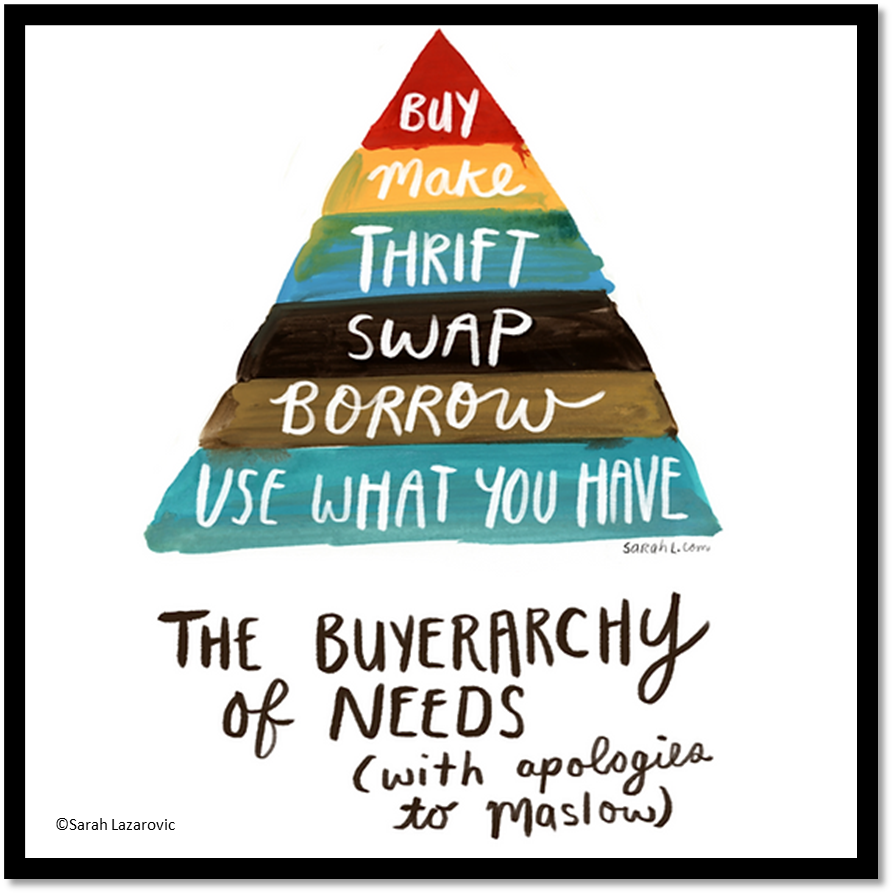
Sometimes you stumble on a gem.
A book. A podcast.
A person.
Someone creating content that connects deeply with you.
I had one of those moments yesterday.
As one who has followed content in the sustainability space for over 15 years, I’m amazed that I hadn’t previously discovered Sarah Lazarovic.
Searching for something else, I stumbled upon the chart at the top of this post.
The Buyerarchy of Needs – genius!
The chart comes from her book A Bunch of Pretty Things I Did Not Buy.
I’m sure I’ll have a review of that here soon.
She also has a Substack with a fabulous name – MVP – Minimum Viable Planet.
Working in digital marketing, this spin on MVP makes me smile.
The Buyerarchy Levels
I’ve written about the concept Buyerarcy in many ways over the years.
One Shade Greener at Home focuses on all the layers of the chart.
Below is my description/interpretation of each level.
Use What You Have: This one is straightforward. Before shopping, we should shop within our house. Is there something we already own that could serve the purpose we are seeking
Borrow: Sometimes we need something just once – a power tool, a large bowl for a party, etc. – in these moments we could consider borrowing from a neighbor, friend, or family member. This approach could be both convenient and cost efficient.
Swap: Swaps are a great excuse to get a group of friends together. Set a theme like clothes, books, home décor, holiday decorations, and more. Invite everyone over and let the trades begin!
Thrift: Shopping secondhand can be a fun, treasure hunt adventure. To dive deeper in this space, you can check out these two posts – Secondhand Trends and Understanding Consignment.
Make: Sometimes I put the category “Make” lower on this chart. Creating our own products can be a smart and even fun choice. Mixing simple products can easily create cleaning products (Green Cleaning), skincare, and aromatherapy – just to name a few.
Buy: When none of the other levels work, we can shift our mindset to conscious consumerism. Being intentional about what we purchase. This post reminds us to look at the Parts and Packaging to make a choice that is One Shade Greener.
Your Turn
Do you use the philosophy in the chart?
Which layer do you leverage most/least?
Does this shift your mindset in how you want to approach shopping?
